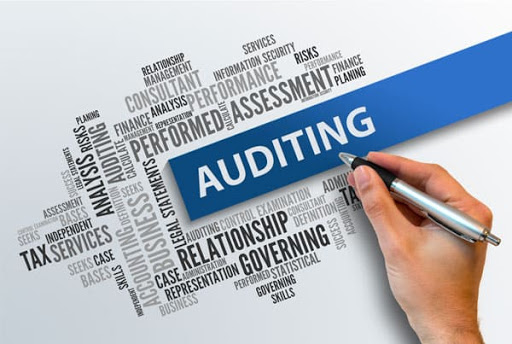Auditing Assurance Tutorial Assignment Help
Week 1: Chan & Chow
Assurance engagement must include the five elements i.e. existence of three party relationships, an appropriate underlying subject matter, suitable underlying criteria, sufficient appropriate evidence and a written assurance report (Aninapure & Ainpure, 2009). Based on these five elements, advice will be given to Chan & Chow on assurance engagement.
A: No, providing an advice on accounting policies and the accounting standards do not count as an assurance engagement. It is not an assurance engagement because there is no three-party relationship and there is no suitable criteria presented in the scenario. Such assistance can be considered as consulting service.
B: Yes, auditing of financial reports is considered to be an assurance engagement as it provides the reasonable level of assurance and fulfills the criteria of assurance engagement.
C: No, management assistance provision and aiding board in strengthening internal controls and corporate governance practices cannot be considered as assurance engagement. There is neither suitable criterion, nor there is any involvement of the three party relationships.
D: No, assistance in training and establishing training process cannot be considered as an assurance engagement. There is neither suitable criterion, nor there is any involvement of the three party relationships.
E: Yes, checking of compliance with the company policies and legislative regulations is considered to be a compliance as
surance engagement because it fulfills the criteria.


Week 2: SKM
A: The auditors are required to perform their activities while practicing objectivity and integrity in such a way that he should be and appear to be free from self-interest that can hinder the objectivity. In the given scenario, following two threats have been identified;
- Self-Interest Threat: This threat arises when the firm gets involved in such activities that give rise to conflict of interest( Becker Professional Education, 2017). For instance, a self-interest threat can arise for SKM as it would be performing other services like receivable management for its audit client Bass. The threat can also arise when SKM would be receiving a fee that is a significant proportion of its income. Performing two services for Bass can create self-interest threat ( Becker Professional Education, 2017).
- Familiarity Threat: Personal or family relationships can impair the objectivity of auditors ( Becker Professional Education, 2017). This threat could arise when any team member of SKM has a close relationship with the client or if client is an immediate family member of any audit team member of SKM.
- The appropriate safeguards for each threat are as below;
- Self-interest safeguards;
– Using different staff members for performing receivable management services from the members who perform the audit services for Brass ( Becker Professional Education, 2017).
– The interests should be disclosed to both parties and the client should be advised on hiring another audit firm or disengaging one or taking responsibility for their work.
- Safeguards against Familiarity Threat
– Rotation of audit partners should be considered frequently so that familiarity with single team can be avoided ( Becker Professional Education, 2017).
– If any audit team member has close relationship with the client, he/she should be removed from the team.
– Services of another consultancy firm can be taken for reviewing the work of present engagement/audit team. Moreover, by assigning the experienced team member, audit team might continue to work effectively ( Becker Professional Education, 2017).
Week 3: Sampson Ltd.
- In the current scenario, the appointment of new treasurer, company earning foreign exchange transaction profits in yens. It has inherent risk attached. It is advised to auditor for checking how the foreign exchange calculations are calculated(Kagermann, Kinney, Küting, & Weber, 2007). Moreover, the risk posed by errors or omission due to new appointment of employee must also be analyzed. This is an inherent risk because new employee might be unaware of complex foreign exchange fluctuation calculations.
- Without identification of assets to be redeployed or disposed off, provisions cannot be estimated accurately (Kagermann, Kinney, Küting, & Weber, 2007). Without physically valuing the assets and estimating the scrap value of disposable assets, provisions cannot be calculated. So, error or omissions in financial statement are inherent risks in this case. The detection risk might incur if Auditor do not find misstatements that are material (Kagermann, Kinney, Küting, & Weber, 2007).
- Careful calculations must be made for calculating the bonuses based on performance as the bonuses will vary person to person and on their salaries (Kagermann, Kinney, Küting, & Weber, 2007). There is an inherent risk in calculating the bonus amount and aligning with personnel department.
- Changing to new software can incur severe risks to the Auditor of Sampson ltd. The auditor must ensure that are balances are carried forward properly and must ensure that the misstatements are not left undetected due to shifting to new accounting software. This might cause detection risk (Kagermann, Kinney, Küting, & Weber, 2007).
- A system administrator is required for ensuring that the system controls are implemented correctly. In this case the control risk will arise. Position of the system administrator can reduce the control risk associated with the data maintenance and for safeguarding it from getting modified or deleted. In any of this case, serious misstatements can arise (Kagermann, Kinney, Küting, & Weber, 2007).
Week 4: Easy Fit Pty Ltd.
- Current Ratio:
CR indicates whether firm is able to pay its current liabilities out of its current assets. It reveals the cover of business for every one dollar that is owed by the firm (Perriasamy, 2009). It seems like Easy Fit Pty Ltd.’s CR fell from 2.24:1 to 1.89:1 in 2007. It shows that as compared to previous year, the company only has $1.89 of current assets to pay for $1 of its liabilities. Although it decreased, yet it is more than 1. However, as compared to industry for both years (2.84:1 in 2007 and 3.27:1 in 2006), the company is underperforming and might face liquidity issues in future.
- Receivable Turnover Ratio
The RTR shows the efficiency of receivables department in recovering its amount owed by customers (Perriasamy, 2009). It shows number of times a company collects its receivables from customers in a year. The analysis suggests that Easy Fit Pty Ltd. has been performing way above industrial trend in both 2006 and 2007. It recovered owed amount 6.3 times in 2007 as compared to industrial trend of 3.7 times. However, as compared to 2006, its turnover ratio decreased. Yet, it remained way above industry’s ratio. It means Easy Fit Pty’s management is working efficiently.
- Inventory Turnover Ratio
The ITR shows number of times the company converts its purchased inventory into sales during the given year (Perriasamy, 2009). Easy Fit Pty is also performing well in ITR as compared to industry. It converts inventory into sales 5 times a year as compared to industry’s ratio of 3.7 times. However, it decreased from 5.5 times in 2006 to 5 times in 2007. The company has good inventory management policy as compared to industry.
- Return on Total Assets
RTA indicates the ability of firm in generating revenues from its total assets (Perriasamy, 2009). Again, the company outperformed in generating sales from total assets as compared to industry. It has a rate of 13% in 2007 as compared to 7% of industry. The rate increased from 11% in 2006 to 13% in 2007. Easy Fit Pty Ltd. is efficient enough in generating sales from its total assets.
- Net Profit Ratio
NPR reflects the ability of management in generating profit from its revenues (Perriasamy, 2009). The NPR was consistent for 2006 and 2006 at 4%. However, it is lower than the industry’s ratio of 6%. It means company is converting 6% of its sales revenues into profits after paying for cost of goods and operating costs.



